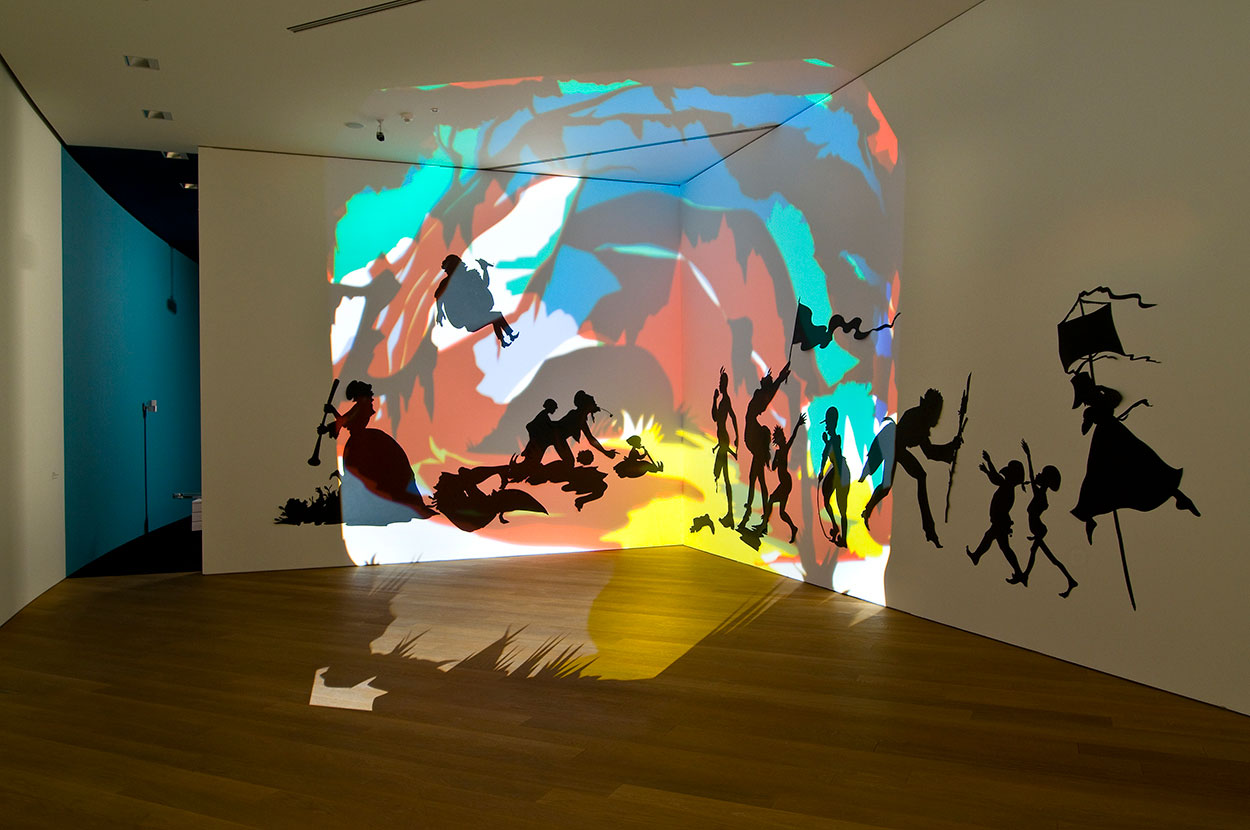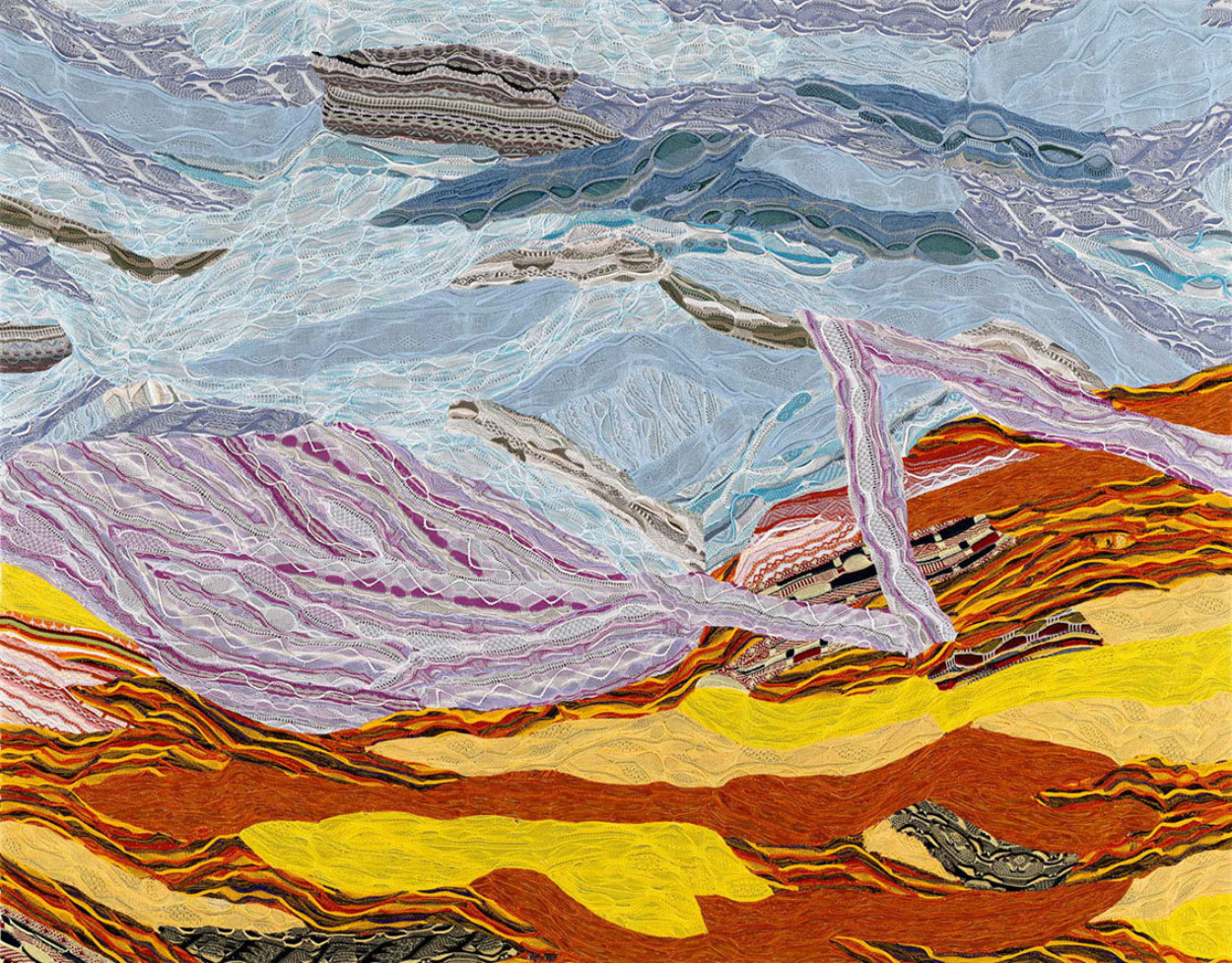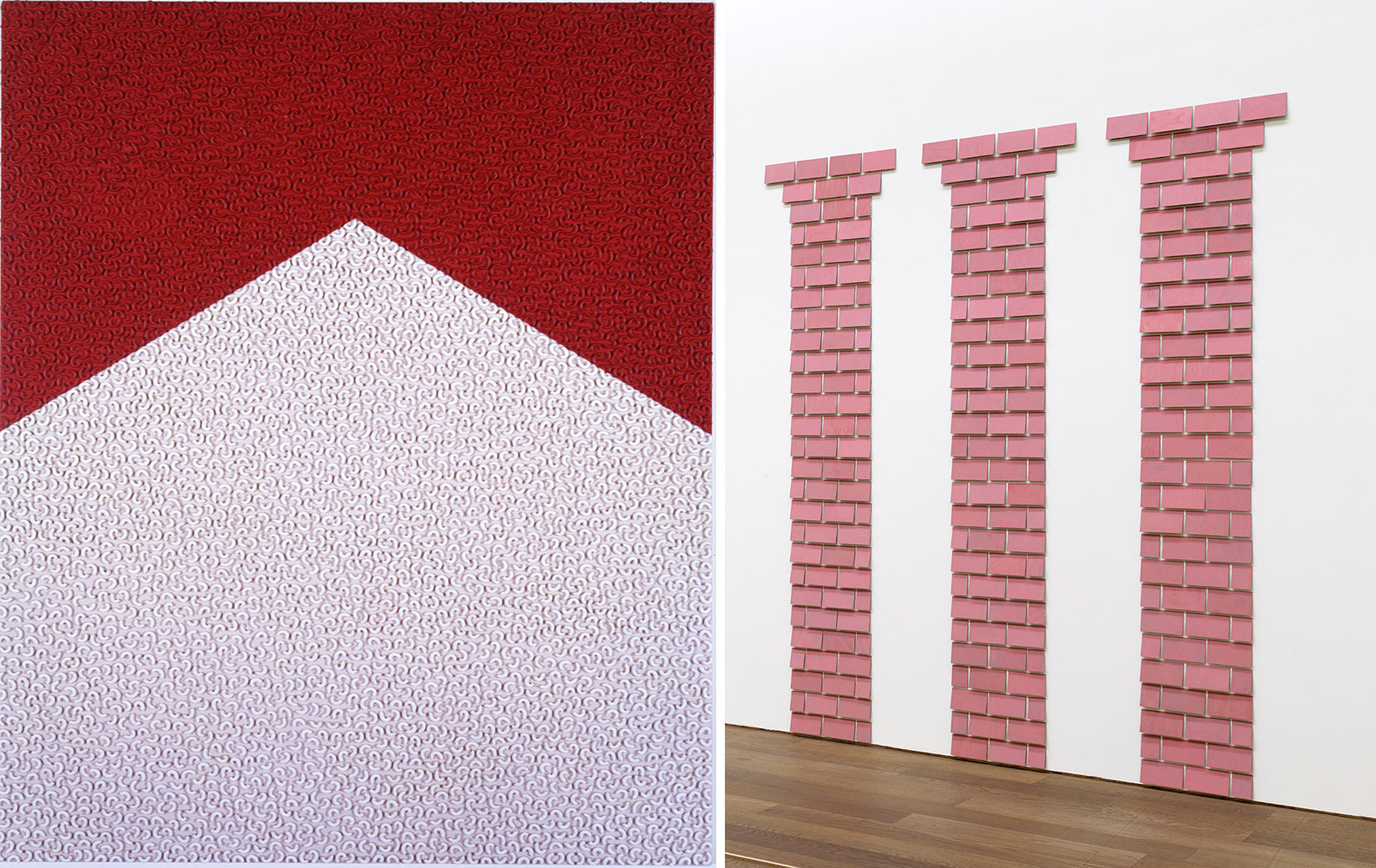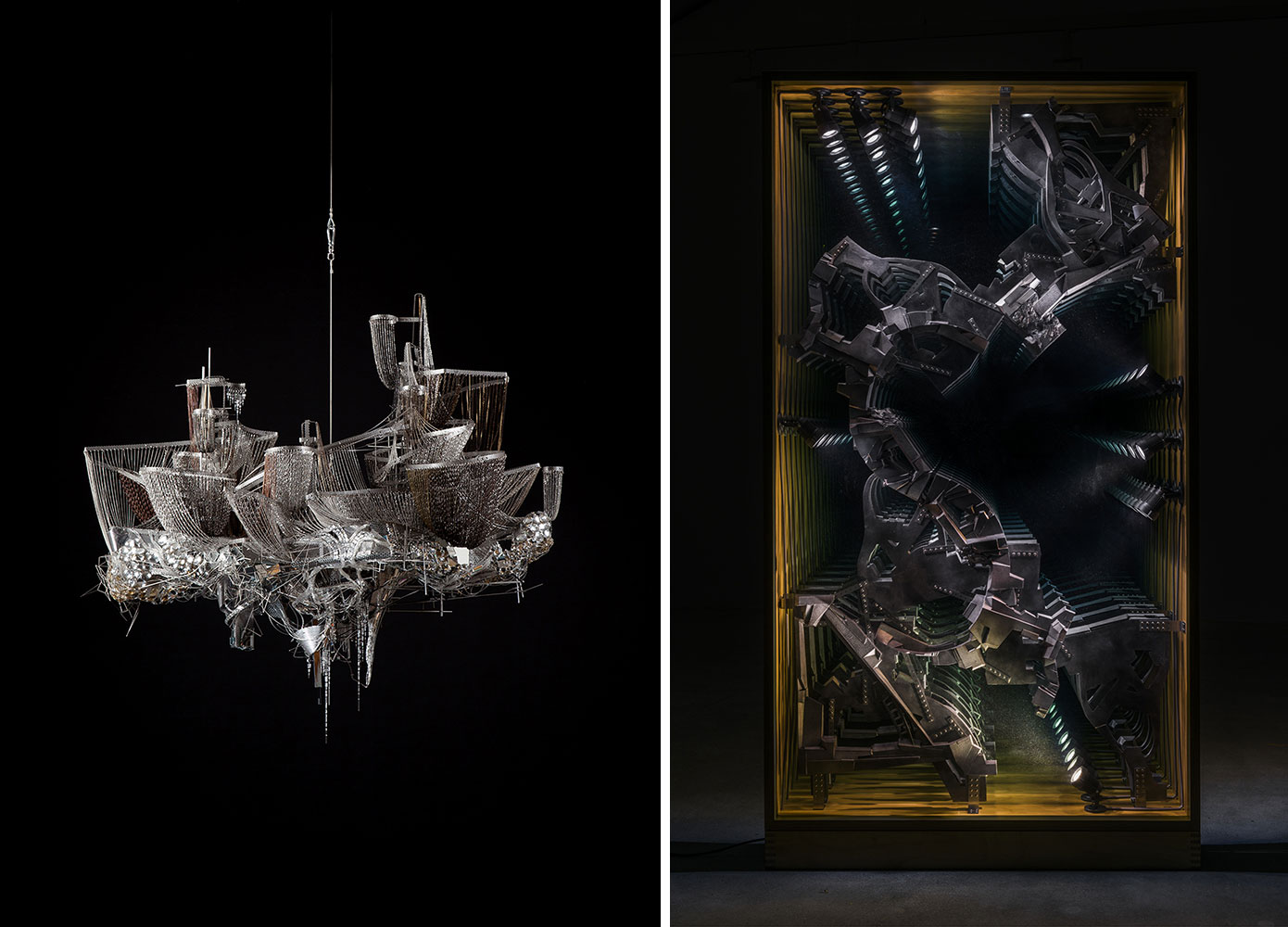ART TRIBUTE:25 years of the Mudam Collection
 With the exhibition “25 years of the Mudam Collection” that celebrates the 15th anniversary of the Mudam Luxembourg – Musée d’Art Moderne Grand-Duc Museum provides an opportunity to demonstrate the diversity and coherence of its Collection, which was established in 1996, before construction and during the initial planning phase of the Museum.
With the exhibition “25 years of the Mudam Collection” that celebrates the 15th anniversary of the Mudam Luxembourg – Musée d’Art Moderne Grand-Duc Museum provides an opportunity to demonstrate the diversity and coherence of its Collection, which was established in 1996, before construction and during the initial planning phase of the Museum.
By Efi Michalarou
Photo: Mudam Archive
This new presentation of the Mudam Collection is based on a selection of some forty artworks and offers an overview of themes that address form, methods and attitudes in contemporary art, from the 1960s to the opening decades of the 21st Century. The displays will undergo an evolution with additional works from the collection to be introduced over the course of 2021.The selection of works makes visible attitudes and approaches to contemporary art that have become reference for successive generations of artists. Taking as example the influence of conceptual and minimalist art, the displays also consider the ways in which figuration and abstraction are part of a dialogue that is constantly renewed, as well as the role of narrative and representation in the production of images. The selection of the works for “25 years of the Mudam Collection” highlights the diversity of the materials, media and processes used by artists, ranging from the use of industrial materials and found objects to the implementation of systems and procedures, or the adoption of the body as a material.
In “Video Portrait Gallery” (1975-1998), Marina Abramović gives, through an autobiographical choice of 14 of her performances recorded on video, an insight into her work. “Art must be Beautiful, Artist must be Beautiful” (1975), “Cleaning the Mirror I (Head)” (1995) or even “The Onion” (1996) are an intense display of the radicalism of her pursuits. Helena Almeida’s more recent works, in which she only portrays reduced ideas of movement by using her own body, bring together her decades of research about the notion of space and the photographic medium itself. In the video “A Experiênca do Lugar II” (2004) we see Helena Almeida sliding about the floor of her studio. In an a almost sacred framework that is reduced to extreme formal austerity, she experiences her environment, its dimensions and its characteristics. David Altmejd’s works are characterised by a wealth of detail that lends formal momentum to individual elements, which in some instances seems to originate from within the elements themselves. His works unfold a disturbingly ambiguous narrative: even as they challenge viewers with unanswered questions, the sculptures validate their feelings and interpretations. In artworks such as “The Orbit” (2012), architectonic elements, mirrors, fruits and anatomical fragments again enhance the complexity of the works. For Altmejd, the dynamic movement in these works, which repeatedly breaks through the inner and sometimes even outer (plexiglass) boundaries, is a sign of powerful vital energy. Tania Bruguera, a politically motivated performance artist, explores the relationship between art, activism, and social change in works that examine the social effects of political and economic power. By creating proposals and aesthetic models for others to use and adapt, she defines herself as an initiator rather than an author, and often collaborates with multiple institutions as well as many individuals so that the full realization of her artwork occurs when others adopt and perpetuate it. For the performance “The Burden of Gilt” (1997-1999) at the 1997 Havana Biennial, she addressed the collective suicides of indigenous Cubans during the Spanish conquest by strapping the carcass of a goat to her naked body and eating dirt, seasoned with salt, for nearly an hour.
Kara Walker in “Darkytown Rebellion” (2001) displays a group of silhouettes on the walls, projecting the viewer, through his own shadow, into the midst of the scene. For many years, Walker has been tackling, in her work, the history of black people from the southern states before the abolition of slavery, while placing them in a more contemporary perspective. Using the slightly outdated technique of the silhouette, she cuts out lifted scenes with startling contents: violence and sexual obscenities are skillfully and minutely presented. Known for his short animated films of great poetic power as well as for his vision of post-apartheid society, William Kentridge was inspired for “Zeno Writings” (2002) by the novel by Italo Svevo “The Conscience of Zeno” (1923). Kentridge concentrates on the main character whose fears and interior torments reflect the social violence and the brutality of the First World War. Through Zeno, the artist explores the development of notions of history and belonging as well as the way in which our identities are defined by social and political changes. Unlike traditional animated cinema based on thousands of drawings, Kentridge composes his work using a small series of drawings which are successively erased, redrawn and photographed throughout the various stages of creation, which he then mixes with paper cut-outs and archive images. The installations by Eva Koťátková are often variable and adapt to each new exhibition. They usually consist of a multitude of objects, drawings, photographs, models and sometimes also videos. Koťátková’s interest is focused on the social norms and rules that influence and determine our behaviour in the various personal or collective conditions of our lives. In “Controlled Memory Loss” (2009–11) she questions the idea of ‘being at home’. For example, in her photographs she symbolically refers to the connections between our body and our habitation.
In her practice Seokyeong Kang combines sculpture, painting, weaving, video and performance. Working within these different mediums she creates evolving installations for a space in which the body plays a key role when considered in terms of its position and movement. In Tina Gillen’s paintings, the subject depicted is often reduced to its simplest elements. Her works present figurative worlds counterbalanced by abstract forms and the back-and-forth movement between these two dimensions wisely balances the great mastery of the pictorial vocabulary and a certain ‘letting go’ in the execution, a certain rigour in the composition and a more intuitive approach. General Idea was a collective of three Canadian artists, Felix Partz, Jorge Zontal and AA Bronson, who were active from 1969 to 1994. As pioneers of early conceptual and media-based art, their collaboration became a model for artist-initiated activities and continues to be a prominent influence on subsequent generations of artists. General Idea’s work inhabited and subverted forms of popular and media culture, including beauty pageants, boutiques, television talk shows, trade fair pavilions and mass media. Their work was often presented in unconventional media forms such as postcards, prints, posters, wallpaper, balloons, crests and pins. Heimo Zobernig has developed a protean body of artwork. Trained as a set designer, the artist has produced paintings, sculptural objects and installations but also performances, films and videos in which he is often the principal actor. Thus, he appeared nude in the video “N°24” (2007), grappling with three shapeless creatures standing out in a blue screen incrustation. This procedure, employed in cinema and television, enables the covering of homogenous colours by other images and makes possible, in its advanced version in the form of Chroma-Key technology, the covering of several colours at the same time.
Works by: Marina Abramović, Etel Adnan, Helena Almeida, David Altmejd, John Armleder, Fikret Atay, Katinka Bock, Tania Bruguera, Lonnie van Brummelen & Siebren de Haan, Lee Bul, Hannah Collins, Tony Conrad, Marie Cool Fabio Balducci, Tony Cragg, Simone Decker, Jürgen Drescher, Jimmie Durham, William Engelen, General Idea, Tina Gillen, Giorgio Griffa, Edi Hila, Suki Seokyeong Kang, On Kawara, William Kentridge, Terence Koh, Jutta Koether, Eva Kotátková, Lutz & Guggisberg, Isa Melsheimer, Bruce Nauman, Jayson Scott Musson, Frank Nitsche, Blinky Palermo, Bernard Piffaretti, Bojan Šarčević, Sarkis, Patrick Saytour, Thomas Schütte, Patrick Tosani, Janaina Tschäpe, Cy Twombly, Javier Vallhonrat, Franz Erhard Walther, Kara Walker, Franz West, Raphaël Zarka, Rémy Zaugg and Heimo Zobernig.
Photo: Kara Walker, Darkytown Rebellion, 2001, Cut paper and wall projection, Collection Mudam Luxembourg, Acquisition 2002, Exhibition view “Le meilleur des mondes (du point de vue de la Collection Mudam), 2010, © Photo : Andrés Lejona | Mudam Luxembourg
Info: Curators: Lisa Baldelli and Marie-Noëlle Farcy Mudam Luxembourg-Musée d’Art Moderne Grand-Duc Jean, 3 Park Dräi Eechelen, Luxembourg-Kirchberg, Duration: 21/11/2020-3/4/2021, Days & Hours: Mon & Thu-Sun, Wed 10:00-22:00, www.mudam.com


Right: Thomas Schütte, Rosa Kacheln (Pink Tiles), 1977-80, Varnish on plastic, 274 parts each 10 x 20 cm, Collection Mudam Luxembourg, Acquisition 2003, © Photo : Konrad Fisher gallery

Right: Lee Bul, Untitled (Infinity partition), 2008, Wood, mirrors, LED, glass, polyurethane, acrylic, 221 x 119,7 x 19,7 cm, Collection Mudam Luxembourg, Acquisition 2014, © Photo : galerie Thaddaeus Ropac




Right: Suki Seokyeong Kang, Rove and Round – face, mat, belly #18-01, 2016–2018, Painted steel, dyed mesh laundry bag, yarn, leather, wheels, 158 x 82,7 x 65,9 cm, Collection Mudam Luxembourg, Donation 2018 – Baloise Group, © Photo : Kyoungtae Kim


